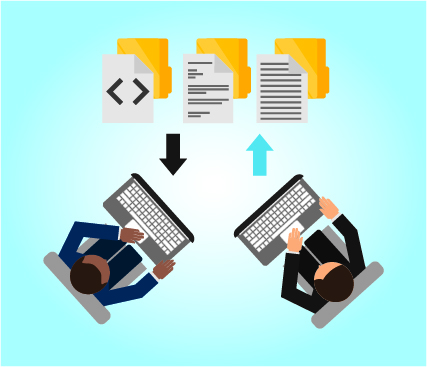Network Documentation Debt: What is it and How to Eliminate it with Fiber Management Software
Taking on business debt of any kind is a balancing act.
For instance, used correctly, financial debt can free up a runway of cash to grow a business. Neglected debt, however, will accumulate interest and become an albatross from under which it can be difficult – and expensive – to dig out.
But there are other kinds of debt that affect businesses; in software we use the term ‘technical debt’ to describe accumulated code issues, akin to deferred maintenance. In fiber optic network infrastructure operations, one of the most common kinds of debt we see is documentation debt.
What is documentation debt? It’s a phrase that describes the concept of neglecting documentation needs in the short term to achieve some sort of benefit – typically saving time, money, or labor – and then being faced with remediating the deficits in documentation later down the line, “with interest.”
That “interest” could be that the business has grown more complex, that equipment, bandwidth or cables are unaccounted for because they’re not visible and must be located by field crews at the company’s expense, or that an acquisition or expansion is slowed down by the lack of reliable data about the existing network. It can also lead to the equivalent of ‘flying blind’.

One ISP with which we’ve worked noted that small, ongoing changes to a network’s originally documented plan are most often the culprit in their documentation debt. Feeding as-built data back to a design engineer tasked with network design mapping is complex and easy to lose track of if not tightly controlled.
Another fiber operator with whom we’ve worked told us of the massive, expensive challenges that they faced when inheriting another company’s network documentation debt. After acquiring another operator’s network, they found that the documentation stopped at geometry traced on a map, with some notes.
They had basic info, but no real idea of what actual assets were modeled by that geometry, and no intelligence in regard to the equipment, circuits or splicing involved in lighting the network. This not only caused issues with longer-than-necessary downtimes for customers experiencing outages, but also slowed down key workflows in expansion as the company mapped existing assets.
In other words, skipped documentation that seems low-stakes in the short term can snowball into a much bigger, more time consuming and more costly job than it would have been to address it in the moment.
Questions? Let's Talk.
That’s documentation debt, and we’ve all experienced it for good reason. In these fast paced times, it is a healthy organizational response to want to bring a project to completion or a product to market, with internal process, assets and mapping dealt with at a theoretical later date when there is more time to focus inward.
How much documentation debt has your fiber optic network accumulated?
It can be difficult to evaluate how much documentation is missing from an existing network map until assets are located and examined. Your network documentation might be robust, with only a few problem areas that need fortification. Or, you might know that your network needs to be documented properly, but are concerned that taking the time to repay your documentation debt might be too costly in terms of labor, time or expense.
No matter what condition your network documentation is in, paying back your documentation debt sooner rather than later can only help your business move forward. Knowing what assets you have at any point in your network, as well as how they are connected and how they interact, is almost as valuable as the network itself.
So how do you fix your documentation debt challenges? You start with fiber management software. Network assets and inventory are increasingly complex sets of data; eliminating human error, workflow bottlenecks, time constraints and communication challenges are all easily addressed with the right software platform.
When you’re ready to shop for a software solution that will take the documentation burden off of your business’s shoulders, it’s a good idea to look for the following:

Self-service data
There are quite a few fiber management solutions on the market, but most require specialized engineering knowledge to fully utilize the software. Look for a solution, instead, that makes digitizing the network as frictionless as possible, and subsequently makes getting reports and data out of the system simple for any member of your team, from your CEO, sales and field crews to your engineers.
Ease of Use
That same specialized knowledge is often needed to simply use some GIS fiber mapping software platforms. In your search, evaluate the user experience to ensure that everyone in your organization has access to your most important asset of all: your network map.
Plus, software has to be enjoyable to use to be adopted across an organization. A streamlined, modern user experience offering data intelligence at a glance should be expected.
Real-Time Updates
Fiber moves fast; so you need a solution that can keep up with the pace of your teams. Software platforms that offer real-time data updates across your documentation as your team members implement them can speed up your productivity and business intelligence.
Integrations & Connectors
Businesses run on software platforms; your fiber management software should be able to “talk” to your OSS and BSS systems, as well as your construction management system if actively building, to ensure that customer-driven data does not get lost.
Browser-based Environment
Fiber Management software has historically been administered from an in-house server that requires maintenance from an IT department. Crucially, using that software would mean having to be in the office to be on a computer connected to that server. In post-COVID life, work from home is the order of the day. Make sure your fiber management system is easy to access from any location.


